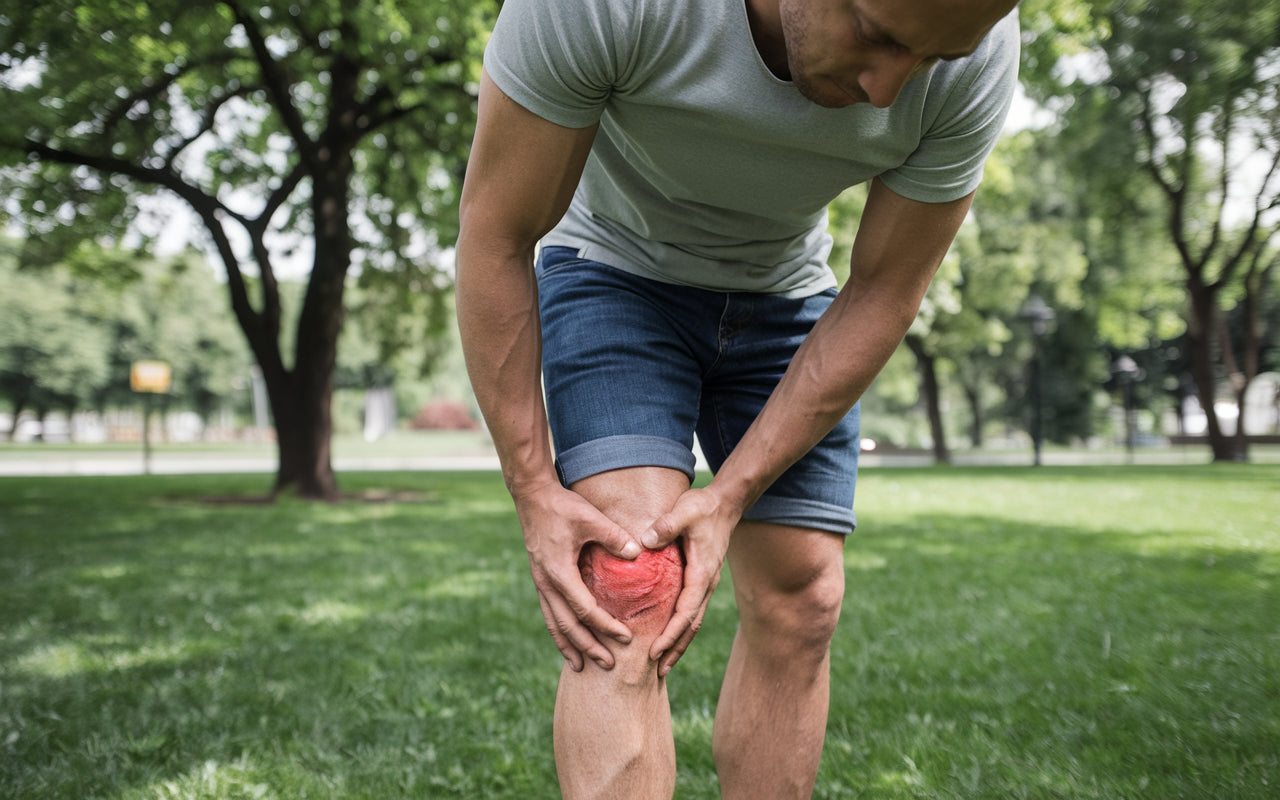Kontusjon på Kneet: Årsaker, Symptomer og Behandling

A knee contusion, also known as a knee contusion, is a common injury that can occur from various types of trauma to the knee. This type of knee injury has a specific ICD-10 code for medical classification. This condition affects many patients annually and causes both pain and disability. This article reviews the most common causes, symptoms, and treatment options for a knee contusion, based on information from orto.nu and clinical experience.
Common causes of knee contusion
A knee contusion usually occurs due to a direct blow or impact to the knee. This can occur from falls where the knee receives the impact, sports injuries (especially in contact sports), or road traffic accidents. Knee contusions are especially common in activities that involve a high risk of trauma to the knee. The injury involves damage to the tissues under the skin, leading to bleeding and swelling in the area.
In some cases, a knee contusion can occur in combination with other injuries, such as cruciate ligament injury (anterior cruciate ligament or posterior cruciate ligament injury), meniscus injury , or patellar luxation. There is therefore an increased risk of developing long-term problems if proper treatment is not initiated in time.
In some cases, a knee contusion can occur in combination with other injuries, such as cruciate ligament injury (anterior cruciate ligament or posterior cruciate ligament injury), meniscus injury, or patellar luxation. There is therefore an increased risk of developing long-term problems if proper treatment is not initiated in time.
Symptoms and findings of knee contusion
Common symptoms of a knee contusion include acute pain in the knee, swelling around the knee joint (hydrops), and tenderness to the touch, especially over the patella (kneecap). Many patients also experience limited mobility in the knee and may have difficulty keeping the knee straight or putting full weight on the leg. In some cases, bruising or discoloration of the skin around the injured area may be seen.
In case of hemarthrosis (bleeding in the knee joint), the symptoms can worsen. The intensity of the symptoms can vary from mild to very painful depending on the severity of the injury. When examining the knee, findings can often be made that indicate the degree of injury through palpation and distal status.
Tests such as the Lachman test and anterior drawer may be performed to rule out an ACL injury . Medial and lateral tests are done to assess for valgus instability, which may indicate MCL (medial collateral ligament) injury. These findings compared to ACL injury help the doctor make the correct diagnosis.
Diagnosis and treatment of knee contusion
If you suspect a knee contusion, the first thing you should do is rest the knee and avoid putting any strain on it. Apply ice to the injured area to reduce swelling and pain. Compression, such as using an elastic bandage, can also help reduce swelling. Keeping the leg elevated, especially in the first few days after the injury, can further help reduce swelling.
For additional pain relief and support, products such as KnäKomforten™ and Termoreliever™ from Komforten can be helpful. These are designed to offer support and comfort, which can be especially valuable during the recovery process, especially in the first few weeks after the injury.
In more severe cases, it is recommended that the patient undergo a clinical examination by a doctor. If osteochondral damage or a torn meniscus is suspected, further diagnostics may be needed. They may recommend painkillers to manage pain and inflammation. In cases of severe hydrops, it may be necessary to puncture the knee to drain excess fluid.
In some cases , physiotherapy and supportive treatment may be necessary to restore full range of motion and strength in the knee. The patient should then have a follow-up visit after one to two weeks to evaluate the treatment effect. In rare cases, if the doctor suspects a more serious injury such as cartilage damage, imaging tests such as X-rays or MRI may be needed, and the patient will then be referred to a specialist clinic.

Recovery after a knee contusion and prevention advice
The recovery time for a knee contusion varies depending on the severity of the injury. Mild contusions with a mild status may heal within a few days to a week, while more severe cases may take several weeks to months. It is important to give your knee adequate time to heal to avoid complications or extended recovery time.
The Knee Comfort™ can play an important role in the recovery process after a knee contusion. This specially designed knee brace offers optimal compression that helps reduce swelling while providing stability to the injured joint. The advanced pressure distribution technology in the Knee Comfort™ contributes to improved blood circulation, which can accelerate the healing process. Many patients report increased comfort and reduced pain when using the Knee Comfort™ during the rehabilitation period, allowing for an earlier return to normal activity without compromising healing.
There are several steps you can take to prevent future knee contusions. Wear appropriate protective equipment when participating in sports, especially contact sports. Regular exercise that strengthens the muscles around the knee can increase stability in the lower leg and reduce the risk of injury. Also, be careful when engaging in activities that involve a high risk of falls or impacts, especially if you have a history of overuse injuries to your knee .
Buy nowWhen should you seek medical attention for a knee contusion?
See a doctor if the pain is severe, if the knee has significant hydrops (swelling), or if symptoms do not improve after a few days of self-care. Also seek medical attention if you experience extreme stiffness, an inability to bear weight on the leg, or if you suspect a more serious injury such as a fracture.
The following conditions require urgent medical evaluation:
- Severe swelling that develops rapidly after the injury (may indicate hemarthrosis)
- Inability to bend or extend the knee
- Instability of the knee joint
- Fever combined with a swollen, red knee (may indicate infection)
Frequently Asked Questions (FAQ)
How long does it take for a knee contusion to heal?
Healing time varies depending on the severity of the injury. Mild contusions may heal within a few days to a week, while more serious cases may take several weeks. Follow your doctor's advice and give your knee adequate time to recover.
Can I exercise with a knee contusion?
It depends on the severity of the injury. In most cases, rest is recommended initially. Light exercise that does not put stress on the knee can often be started after a few days, but always consult a doctor or physiotherapist before resuming exercise.
How can I distinguish between a knee contusion and a more serious knee injury?
A knee contusion usually causes localized pain and swelling, but you should still be able to move your knee to some extent. If you experience extreme pain, an inability to put any weight on your leg, or hear a popping sound at the time of injury, it may indicate a more serious injury that requires immediate medical attention.

